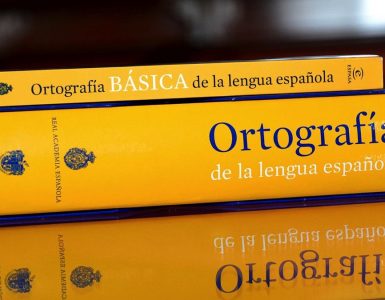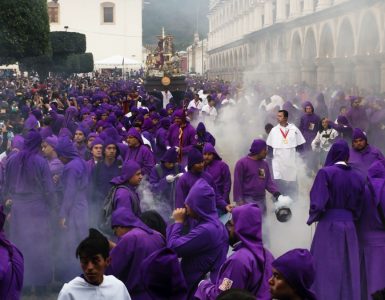Like various colors such as purple and yellow, orange also has several names by which it can be called in Spanish. Being of the same name as the citrus fruit that we like so much, it is normal to wonder: what came first, the color or the fruit?
It turns out that in ancient times, this color was simply yellow-red or red-yellow, while in France oranges were called oranges. So yes, this name came from the fruit and is still used today under multiple terms to refer to this secondary color, a mixture of red and yellow.
I will show the different ways to say orange in Spanish and when each one is used. It is worth noting that most of the terms vary according to the topic being discussed, but in regular conversations and everyday situations, orange will always be the most common term which is the first we’ll start with.
Naranja/Naranjo – Orange
This term comes from a Sanskrit word meaning “poison for elephants”, due to a legend that tells the story of how an elephant dies of gluttony after eating too many oranges.
Naranja comes directly from the word naranjo which means “tree that gives oranges”. Originally though, naranjo was also used as the word for the fruits of the naranjo tree as well which came from Persia and Arabia and were sour and bitter. After the fruits arrived in the Iberian Peninsula via the Portuguese, the fruits had become much sweeter than the original sour oranges. This is how the terms naranja and naranjo split in Spanish, and nowadays the word naranja is used to exclusively refer to the sweet fruit of the naranjo tree.
This happened in the Middle Ages and has survived to the present day, being used in the same way to refer to the tree, its fruit and color in all varieties of Spanish.
Anaranjado – Orangey
Etymologically, anaranjado means orange-colored or resembling orange. It derives from the previous terminology and was used to differentiate once and for all the orange tree (tree), the orange (fruit), and the color (orangey). It is widely used in Latin America since in Spain they still prefer to say orange to refer directly to the color. However, in Latin American countries, it is used to refer specifically to the color orange in any color chart.
Azafranado – Saffron
Means that is saffron-colored or bearing a resemblance to saffron. This term originated in Spain, where this fine herb is widely used in paella and other foods. The same color as the saffron flower and the dye it gives to food and everything it touches as a dye was what gave rise to this similar term, which can be seen in some literary texts of the Castilian language.
Bermejo – Ginger
It refers to a semi-dark red tone, similar to that of redheads, which is a very saturated copper color. It is used to call any animal or person who has hair of this color, so it is a term widely used in hairdressers and in some areas of Spain to refer to a person with red hair. It is also a surname because, in ancient times, surnames were used to designate some special characteristic of lineage or family. In this case, it was synonymous with gusanillo, since the dye of this color was extracted from it to dye fabrics red.
Cobrizo – Copper
It is another term used for orange and is derived from the metal copper and means “that which is copper-colored” or “pertaining to copper”. It refers more to a pale reddish-orange hue, resembling the color of copper. It is used throughout the Spanish-speaking world to refer to reddish blonde hair and is one of the most popular colors in esthetic colorimetry.
Rojizo – Reddish
All tones between red and yellow can be called rojizo. In this sense, a reddish tone can range from an intense burgundy to a pale and very subtle copper. Etymologically, this term means “that which is red” or “that which belongs to red”, so it is used daily to refer to any inaccurate tone between these two ranges of colors.
Alazán – Sorrel
It comes from Hispanic Arabic and refers to the red/brown that derives mainly from some horse breeds. The alazán is an uncommon color and many rather identify it with brown, but the truth is that according to the theory, it belongs to the range of reddish tones. It is used to refer directly to these animals or simply in some literary texts, especially as similes.
Bayo – Bay
It is also a name that came from equines, as it has a similar origin to alazán. Bayos are horses with pale yellow, almost white, coats. This term for anaranjado in Spanish is very curious, because people associate the color bayo more with yellow than with orange. It can also refer to the silkworm that some fishermen use as bait, especially in countries like Spain and also to a kind of bean that is sold in Latin America and presents this tonality.
Canelo – Cinnamon
It is another way of referring to the characteristic brown color of this aromatic tree. Although it is more common to use acanelado to describe the skin of a brown person, the color canelo (or canela) also serves the same function, in addition to describing reddish-brown objects.
Acanelado – Brownish
It means “that which is cinnamon-colored” or “that which bears a resemblance to cinnamon”, that is why it is a romantic term to refer to people with a dark complexion. Spaniards often use this term to praise Latinos, since most of them have a vibrant and strong attitude, as well as their skin, which is one of their most characteristic features. Referring to someone as acanelado is a way of highlighting their personality, spicy and pleasant, comparing it to this spice as precious as cinnamon.
Buriel – Bouriel
The farmers, during holidays and mourning days, carried with them reddish cloths called buriel. Hence the origin of this term to refer to a reddish color that is between brown and dark black on the color scale. To use it as an adjective means that we refer to something vibrant red, and although its daily use is not common, we can still see it in poems and literary texts.
Aloque – Alloque
It comes from an Arabic term that literally means saffron or diluted saffron. Aloque is the color resulting from mixing white wine with red wine in equal parts. It belongs to the reddish range and although it is a very nice color, it is also used to call some mixed wine cocktails.
Flavo – Flavous
It refers to a reddish yellow color, similar to honey, gold or fire. The Latin flavus from which it comes means light golden blond, as it was formerly used to refer to someone with hair golden like honey, or simply golden yellow. In fact, words like flavonoids and rivoflavins come from this term, as these secondary plant metabolites are of this color and are present in plants like papaya and orange. From this term also came the proper names Flavia and Flavio, which in ancient times referred to people with blond hair.
Final thoughts
As we have seen throughout this article, there are many different ways to say orange in Spanish and many refer to not so orange shades that in everyday situations we would simply associate with colors such as yellow and brown. Understanding these differences can help us better distinguish between what kind of colors Spanish speakers are referring to and also in what aspects of everyday life they are used.










Add comment